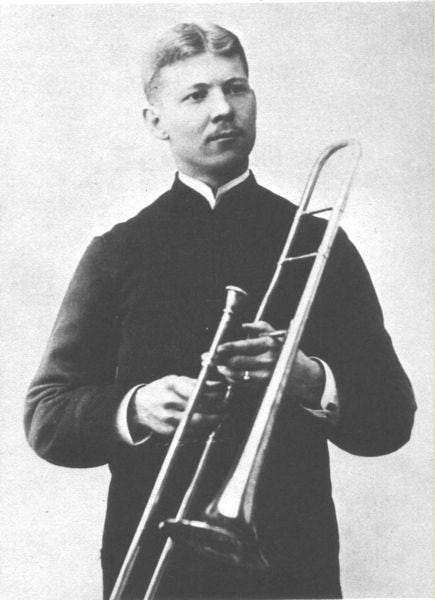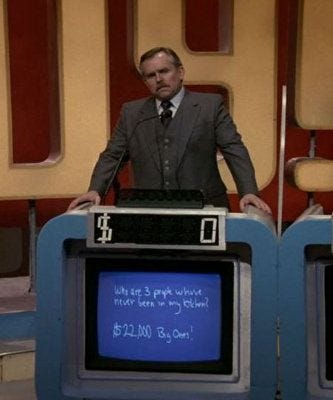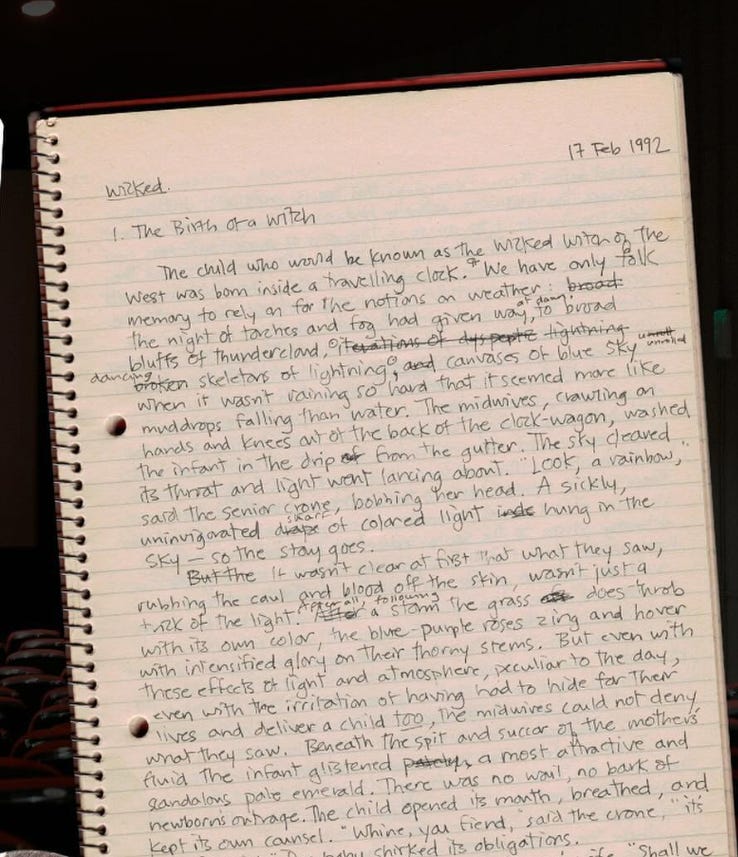Are You Crafting or Repeating? Part 1
In order to find your voice, you have to learn the voice of others.
As artists, we are products of the art we’ve consumed. You’ve seen it, read it, watched it, listened to it… tag, you’re it. However, as we progress, are we producing our own version of it, or are we merely doing what’s been done before?
Last week, I spoke to music students before a concert and they asked if I had any audition advice.
“Ein Heldenleben (A Hero’s Life by Richard Strauss) hasn’t changed since 1898. If you practice the battle scene again and again, you’ll likely produce the same results as well as the same mistakes, and your playing won’t change either. Focus on the fundamentals of what you’re trying to accomplish and the reason the excerpt is so difficult: duple time notes in triple meter, powerful crushing crescendos while maintaining fantastic tone, musical expressiveness and (wait for it…) telling a story.”
While I believe the bulk of the paragraph is sound advice, it is the first statement that resonates in my head over and over. Ein Heldenleben hasn’t changed since 1898. The classics, or better yet, everything that has been produced hasn’t changed since its premiere. As you create your new thing, ask the question: Are you reproducing something that has already been done?
It should be noted that in your first venture into Heldenleben, after you’ve mastered the pronunciation of the title, it’s okay to try to play your excerpt like your favorite recording. That is one way we develop our style, by copying a version we heard once before. Don’t worry about what the final version will sound like yet. You’ve got an awfully long way to go till that happens.
The Concerto and I
At the turn of the 21st century (ouch!) I took on the Tuba Concerto by former Air Force Bands arranger, and current Hollywood music legend, John Williams, as a solo competition piece. It came to my focus thanks to Doug Yeo after he performed it with the Boston Pops.
I contacted Mr. Yeo and requested a copy of the radio broadcast, which he generously supplied for me on a cassette tape. (This is one of those old, old, OLD stories, kids.) What makes this tale relevant is the third movement features several pages of run-on, double-tonguing passages, a la turn of the previous century’s technical showpieces made famous by cornettist Herbert L. Clarke and trombonist Arthur Pryor.

Here’s Uncle Jay’s hot take for April…
I hate double-tongue passages. They are nothing but technical showcases of ZERO musical content. They justify why Flight of the Bumblebee is only one minute long. Because, if it was fifteen seconds longer, you’d drive a railroad spike through your temple, just to make the repetition stop, that’s why.
~Here ends Uncle Jay’s hot take for April.~
Well… guess what the last two pages of the John Williams has? Yuppers! Annoying double-tongue passages!
When I received the recording of his performance of the concerto, and aligned it with the printed music, I noticed he “watered down” the double tonguing into a rhythmic pattern that drew me in with effective tension and release. Instead of…
“dugga-dugga dugga-dugga dugga-dugga dugga-dugga dugga-dugga dugga-dugga dugga-dugga dugga-dugga,”
we got…
“dugga-dut dut dugga-dut dut dugga dut (rest) dugga-dugga-dugga dut dugga dut dugga doo-dut.”
See? Isn’t that much more interesting?
(I believe the above section presents the pinnacle of my writing career, don’t you? Or dugga-dugga-dontchu?)
When I performed the concerto, I opted for the Yeo articulations instead of the original Williams technical balderdash and ballyhoo and that made all the difference. My performance earned me a prestigious award (better than the one in A Christmas Story) and I lived happily ever after. The End. Or is it…?
When in Rome, Do Write As the Romans Do
What do Hunter S. Thompson, Mary Robinette Kowal, and Ben Franklin have in common?

They copied favored writing of their heroes BY HAND in order to absorb their admired author’s style. Thompson (The Great Gatsby), Kowal (Jane Austen novels), and Franklin (The Spectator newspaper) learned by copying to enhance their own writing and improve it. If you then pick up any writing by those three, you’ll discover a unique voice all its own built on the foundation of countless hours studying the works of others.
But Jay, are you saying that all you have to do is copy the work of others to build your success?
Why no, italic inner voice, I’m not.
After learning about the above process, I decided to give it a try. I wanted to immerse myself in the process and see what would happen. I chose for my epic tome of study, “Wicked” by Gregory Maguire. When I first read it years ago, I noted there was something flowery about his language and phrasing, and something rhythmic in his descriptions. I wanted to crack the code and see what the secret sauce is.

Armed with a Rhodia wire-bound pad, and a small phalanx of fountain pens, I began on page one of both the novel and the blank pad of paper. The process takes a great deal of time and patience. After all, it’s about the journey, not the completion… which means I’m only on page 75 of 560. There’s still quite a lot of Shiz ahead of me.
So, do I now write like Gregory Maguire? Of course not.
My observations, so far:
Phrasing. Like a great jazz musician, Maguire has mastered the art of varying phrase lengths, which every skilled writer should do as well. A great example of this practice can best be described by my all-time favorite meme regarding writing, courtesy of Gary Provost:
Juxtaposing the villain into the role of the protagonist. Over many different books and decades of writing, Maguire has taken the familiar story, and shifted the perspective to a different character. Elphaba or Toto instead of Dorothy, the mirror instead of Snow White, and more. Taking the obvious and familiar, and reframing it into the not as obvious inspires me to great heights. Both of my books do the same thing and I can’t wait to write more from a different point of view.
We can play our instruments just like our teachers, and write a phrase just like the masters. While it shows an understanding of how THEY did it, does it mean you can do it too? Not yet. In the second part of this series, I’ll ask you…
Are you creating something new or doing what your favorite artist already did?
Meanwhile… write on.





Your practice of copying down what others have written sounds like advice from Sacha Black! She advices to notice and pick apart what others do in their writing so you can understand how writers do what they do. Having the knowledge allows you to decide when and in what way to use it for yourself!
Happy writing!
Beth
Waaay back in a high school English class, our teacher challenged us to change or add to the ending of a story we'd read in class. I chose "The Old Man and the Sea." I didn't like how it ended, so I gave myself a bit of closure. My teacher congratulated me on copying the pace and cadence of Hemingway. I still do this today. In the form of fan fiction - to sharpen my skills and just have a little fun with my writing...and give myself satisfactory endings.